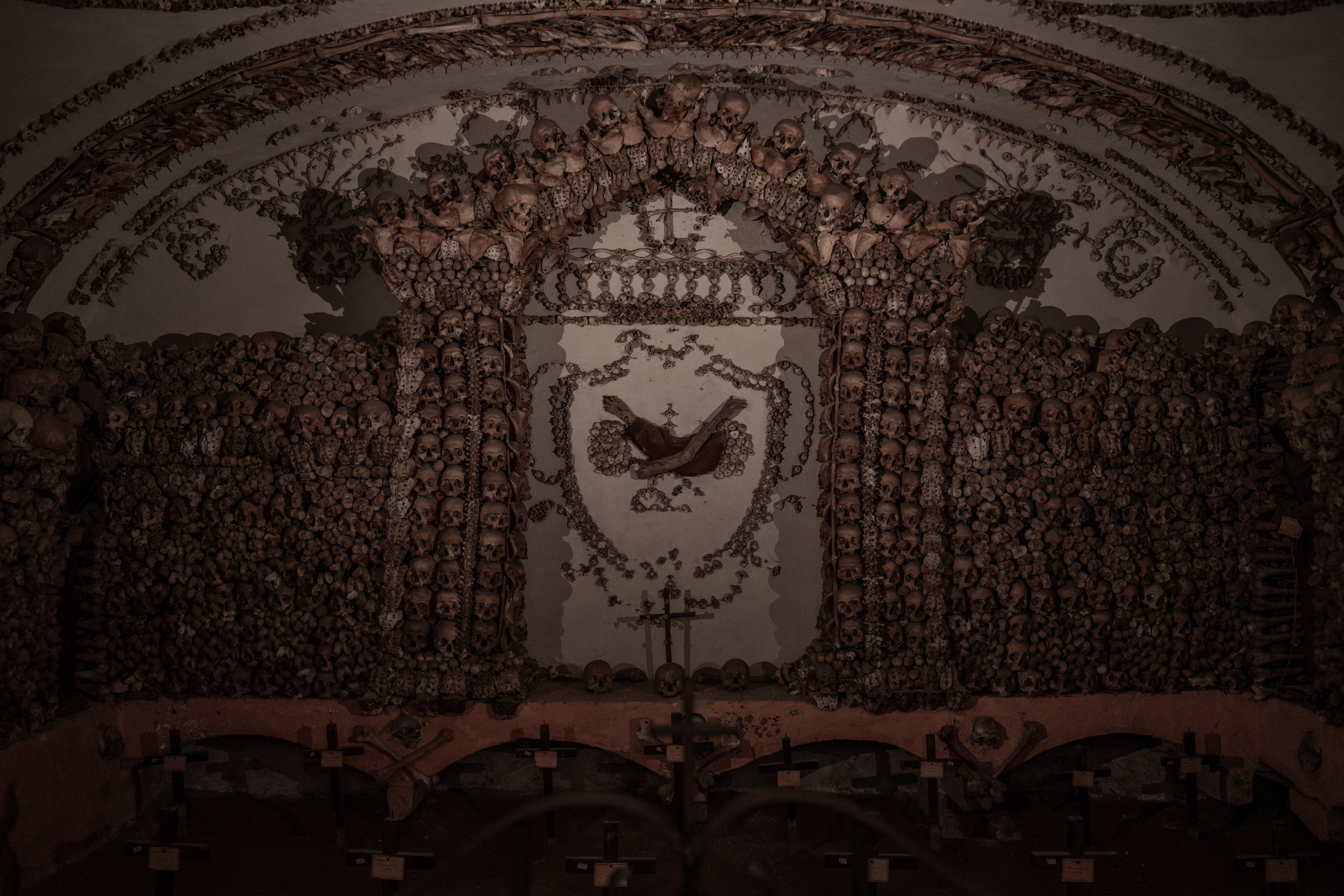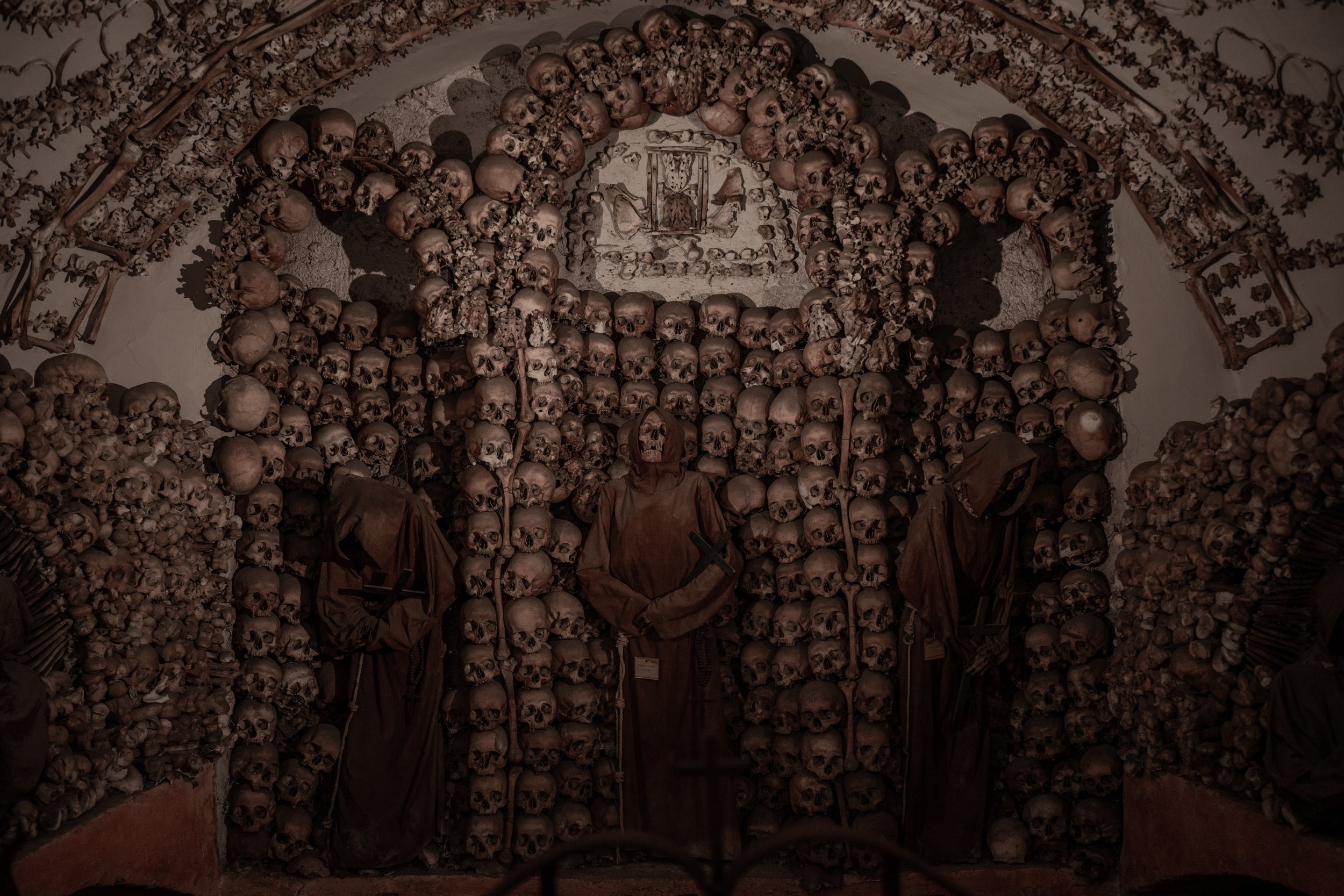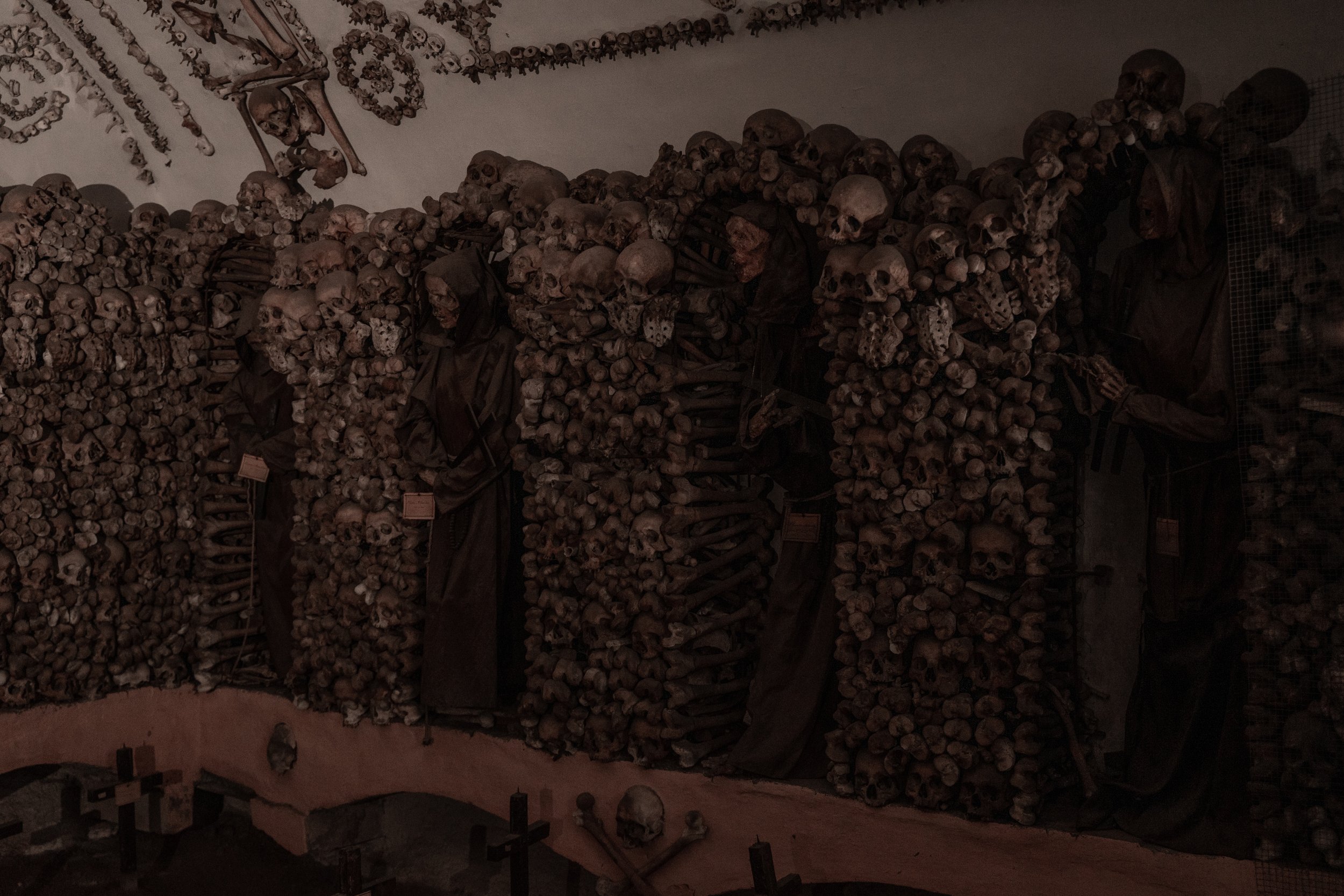Museum and Crypt of the Capuchin Friars






This impressive complex originated in the 17th century and is a fascinating spectacle of memento mori. The unique heritage site, also known as the ‘Bone Church of Rome’ includes the remains from nearly 4000 former friars. These create many elaborate designs within the crypt and act as a poignant reminder of one’s own mortality and our limited time on Earth.
The museum and crypt are situated beneath the church of Santa Maria della Concezione dei Cappuccini (Our Lady of the Conception of the Capuchins) which is worth having a look around either before or after your visit.
Firstly, you will be given an audio guide which takes you through each part of the museum’s exhibition and tells the story behind the Capuchin order and the history of the ossuary. Many wonderfully dark paintings are also on display including St. Francis in Meditation by Caravaggio as well as sculptures and artifacts reflecting the former lives of the friars.
Access to the sombre crypt is at the end of the museum where you will find several alcoves using the bones of the friars to carefully decorate every inch of the walls and ceilings which in my opinion creates an eerie yet beautiful sight that offers a stark reminder that death is faced by all sooner or later. You will see a small inscription stating ‘That which you are, we once were; that which we are you shall be’, which can be taken as a warning from the monks.
It seems quite fitting that the monks who saw themselves belonging to the brotherhood in life are also part of a larger design in death, with multiple rooms focussing on different body parts to produce a variety of macabre masterpieces.
You will be able to witness the crypt of the three skeletons, the tibias and femurs, the basins, the skulls, the chapel for the mass and the crypt of the resurrection. The amount of detail which has gone into creating each of the designs is truly astonishing!
The complex appeals to the curious traveller within us and offers a place to contemplate and reflect on the transience of life versus spiritual eternity, which is an important theme in the Capuchin friar’s beliefs.
Address: Via Vittorio Veneto, 27, 00187
